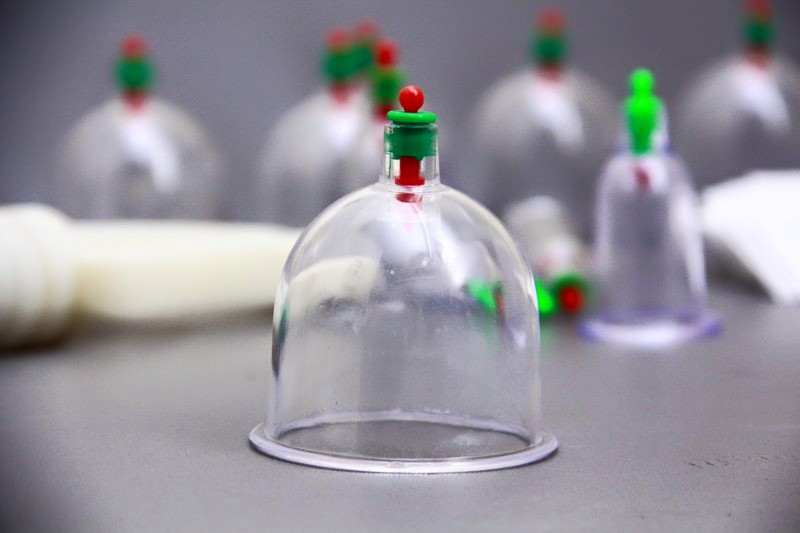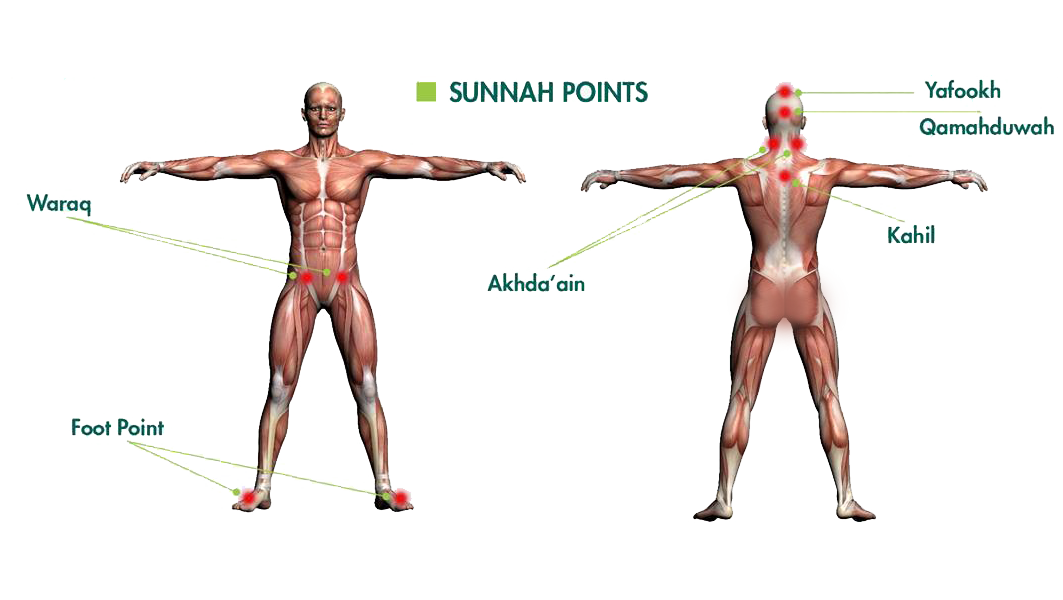
Hijama Cupping Therapy is an Islamic, natural, holistic, healing therapy. It’s an ancient form of alternative medicine in which a therapist puts special cups on your skin for a few minutes to create suction. People get it for many purposes including: pain, inflammation, blood flow, relaxation and well-being, and as a type of deep-tissue massage.
The cupping therapy works wonders on the people who opt for it. It sucks out the undesirable blood from the body, leaving the body rejuvenated and refreshed. It can be used to target and treat conditions including digestive problems, joint and muscle pain, asthma, low fertility and many more. This therapy ensures long term benefits and long-lasting effects unlike the modern medicine and surgery. There are specified spots on the body that are cupped during the hijama process, in order to collect the unwanted blood. However, it is most often performed on the back, neck or shoulders, delivering exceptional results.
Hijama can also be used for boosting the circulatory and immune systems, as often done by athletes. It cleanses and detoxifies the body. The most common illness that cupping is used for is that of muscle or joint pain, relieving the patient, leaving them feeling healthier and more efficient. Cupping also helps in fertility and hormonal balance of the human body. Hijama is also useful for treating many muscular, skeletal, neurological, immune, cardio-vascular, respiratory, digestive and urinary issues.
Hijaamah comes from the root al-hajm, which means “sucking”. Al-hajjaam is the name given to the cupper, and hijaamah is the name given to this profession. Al-mihjam is the name given to the tool in which blood is collected, or to the knife used by the cupper.
Research and study have also been recorded to state that Hijama therapy has a positive impact on ones’ mental health. It ensures to reduce blood pressure and leaves the individual calm and stress-free. Not only that, the cupping procedure can also be used to cure more severe and disturbing problems like depression and anxiety. Before giving in to anti-depressants and relaxants that may have harmful side effects, it is highly recommended to give hijama a chance. Hijama patients have often mentioned that besides the illness that was being treated, they also felt mentally healthier and relaxed.
Ibn ‘Abbaas (may Allaah be pleased with them both) reported that the Prophet (peace and blessings of Allaah be upon him) said: “Healing is to be found in three things: drinking honey, the knife of the cupper, and cauterization of fire.”
(Bukhaari, 10/136).
Cupping therapy has been practiced for centuries globally. The first documented medical text was found in 1550 BC in Egypt. Cupping was also discovered in China over 5,000 years ago and is still practiced to this day. It was commonly practiced in the Roman Empire, Islamic Empire, Europe, Russia, Central Asia, South Asia, and the United States. It was very popular during the middle ages and 18th and 19th Centuries in Europe. Right now, it is most popular in China, Finland, Russia and many Muslim-majority countries.
During the Night Journey & Ascension (Laylatu’l-Isra’ wa’l-Mir’aj), our Beloved Prophet Muhammad (peace and blessings be upon him) experienced many profoundly significant events. He flew on a winged horse (al-Buraq) from Makkah to Jerusalem, accompanied by the Angel Jibreel. He prayed with many other Messengers of Allah, ascended to the highest of the seven heavens, was given the gift of five times daily prayer and tenets of creed by Allah the Exalted.
Amongst all these amazing miracles, Allah the Exalted also ordered the Angels to instruct Prophet Muhammad (peace and blessings be upon him) to establish hijama cupping therapy;
The Prophet (ﷺ) is said to have had hijama on top of his head, his foot, both sides of his neck and between his shoulders etc. The practice of hijama was continued by his companions after his death and it has a strong presence in middle eastern countries to this date.
The diagram below illustrates the points:

The Prophet (ﷺ) was cupped on his head for an ailment he was suffering from while he was in a state of Ihram. at a water place called Lahl Jamal. Ibn `Abbas further said: Allah's Apostle was cupped on his head for unilateral headache while he was in a state of Ihram.
[Bukhari]
Most of the people who never get it done are those who fear the procedure and think it will hurt a lot. Rest assured that slight incisions are completely harmless and painless when done by a professional. They don’t leave any mark on your body like a deep cut does.
Cupping (hijama) is of three types:
- dry cupping (hijama) - This is the process of using a vacuum on different areas of the body in order to gather the blood in that area without incisions (small, light scratches using a sterile surgical blade or disinfected razor).
- Dry massage cupping (hijama) - This is similar to dry cupping (hijama) but olive oil is applied to the skin (before applying the cups) in order to allow easy movement of the cups.
70% of diseases, pains and ailments are due to the blood being unable to reach certain parts of the body. Dry cupping (hijama) and dry massaging cupping (hijama) allow the blood to reach these places.
Dry and massage cupping (hijama) may be self-administered in the comfort and privacy of your own home. Dry and massage cupping (hijama) may be administered any time of the day, any day of the week or month. There are no restrictions.
Although dry and massage cupping (hijama) are very beneficial, they are not from the Sunnah. However, they fall under the general hadith:
The Messenger (SAW) said: "For every disease there is a cure so if the medicine comes upon the disease it cures it by the will of Allaah, the Most High."
[Saheeh Muslim, 2204]
- wet cupping (hijama) - This is the process of using a vacuum at different points on the body but with incisions in order to remove 'harmful' blood which lies just beneath the surface of the skin. (It is recommended that wet cupping (hijama) is only administered by a cupping therapist).
Wet cupping (hijama) is best administered at certain times of the day and days of the week. To obtain maximum benefit from cupping (hijama), it is recommended that all three methods of cupping are used.
Назад в новостиThe application for
edits point accepted
Edits will be added
after verification, you
there will come a notification
in the personal Cabinet






